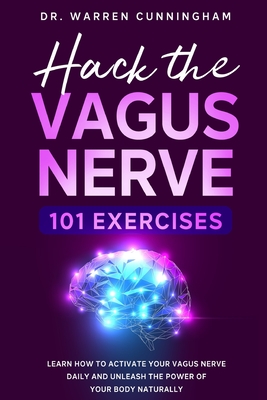
Hack The Vagus Nerve 101 Exercises: Learn How To Activate Your Vagus Nerve Daily And Unleash The Power Of Your Body Naturally
Description
+101 Daily Exercises for Hacking your Vagus Nerve
If you are looking for a complete guide on how to hack the vagus nerve, then keep reading...
What is the Vagus Nerve? Did you know that the human body has 12 cranial nerves? Did you know that each "nerve" is actually comprised of two nerves, typically left and right nerve intertwined to make the "one" cranial nerve. And these nerves are the link between your body and the brain? Have you ever wondered how the brain and body "talk" to one another? It is all through these cranial nerves. Some of the nerves are responsible for sharing sensory information, like how something sounds or what it tastes like. This means these nerves need to have the sensory function to interpret the smell of something. But then there are other nerves that "talk" with the muscles and even some glands. These nerves are called "motor functions." And finally, while most have a single function, either sensory or muscle, there are others that operate with both. The Vagus nerve is one such nerve.
To help you understand where a nerve is located, each cranial number is assigned a number represented in Roman numerals, for example, I is one, II is two, etc. The Vagus nerve is the tenth nerve and is called CNX, or Cranial Nerve Ten.
In Latin, the word "vagus" is defined as "wandering." When you understand a bit more of the makeup of this nerve, you will realize that this description is pretty accurate. The Vagus nerve is the longest in the human body, and it does a lot of traveling around and through it. Basically, it moves from the base of your skull to your lower torso. You will learn more about the passage of this nerve later in this chapter.
There are two parts to the sensory functions of this particular nerve:
Visceral: This is used to describe the "feelings," or sensations, in your body's organs.
Somatic: This term is applied to your physical "feelings," or sensations in the muscles and skin of your body.
This book covers the following topics:
- Hacking your vagus nerve: all you need to know to activate your body's natural healing power
- What is the polyvagal theory? The key to heal yourself through the central nervous system
- Breathing techniques: activate your vagus nerve and reduce anxiety and stress
- Meditation & yoga workouts: poses and other exercises to relax yourself
- Creative therapies: expand your mind and heal through hacking you vagus nerve
- Diet and food tips to help to stimulate your vagus nerve.
- Laughing, singing, humming and gargling can have amazing results on your nervous system health.
- Accupunture and other traditional oriental techniques: learn tai chi and qi gong basics
- Passive method to activate vagus nerve
- Massages you can learn to activate your vagus nerve.
- Ptsd (how vagus nerve interact in ptsd)
- Stress and panic attacks
- Your vagal tone, what that means and how it affects the body
- How to fix emotional detachment
- Recommendations, faq and some last tips & tricks.
...And much more
Each part of the sensory function is unique. The somatic function gives information regarding the skin from behind the ears. It also shares this information from the ear canal and various parts of the throat. It is also responsible for the visceral info.


